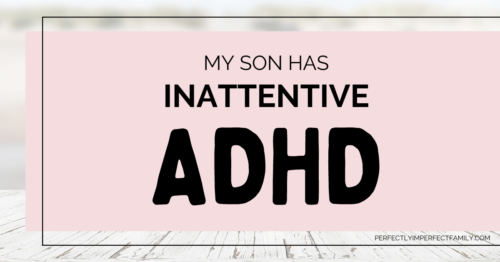My Son Has Inattentive ADHD
My son has Inattentive ADHD, a less obvious subtype that often goes unnoticed because it lacks hyperactivity. Our journey began when teachers noticed his struggles with following directions. Through diagnosis, medication, and daily challenges, we've learned so much. I’m sharing our experiences to help others navigating ADHD — because no one should feel alone in this journey.
What Is ADHD Inattentive Type?
My son was diagnosed with ADHD inattentive type at age eight. This means he struggles with focus, organization, and paying attention to details. He gets easily distracted, forgets tasks, and has trouble staying on schedule. Despite routines, staying organized remains challenging. Working closely with his teachers, we've learned how to better support him in these areas.
Our Experience With an ADHD Diagnosis
Our son was diagnosed with ADHD, inattentive type, in second grade, thanks to his teacher's recommendation. Before that, we hadn't noticed the signs, and it took some time to get a formal diagnosis after filling out extensive paperwork and testing. Even now, we continue to learn about ADHD as we navigate his journey.
A Mother’s Experience With Tactile Defensiveness
Tactile defensiveness is when someone is highly sensitive to touch, and our son was diagnosed with it at 18 months. From avoiding physical contact to struggling with eating and hygiene, it's been a challenge, but he's learned to manage it. I'm curious to hear from others dealing with tactile defensiveness — let's connect and share experiences.
Learning to Walk With Tactile Defensiveness
After our son’s tactile defensiveness diagnosis, we worked hard to help him learn to walk. Physical therapy, foot brushing, going barefoot on different textures, and using a walker were key steps. It took months, but eventually, he walked independently. Eating remains our biggest challenge, but we continue to work through it together.





